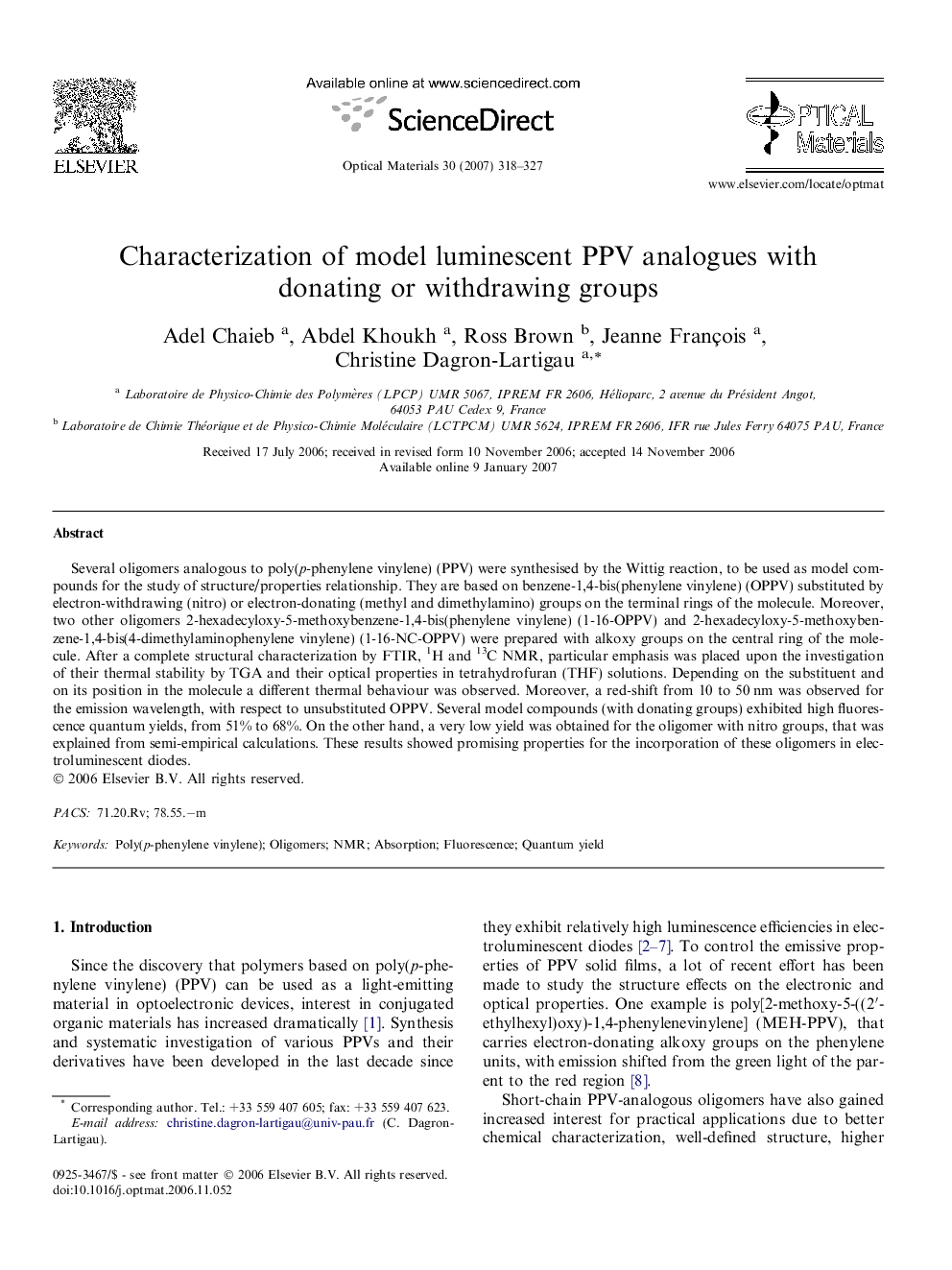| Article ID | Journal | Published Year | Pages | File Type |
|---|---|---|---|---|
| 1497462 | Optical Materials | 2007 | 10 Pages |
Abstract
Several oligomers analogous to poly(p-phenylene vinylene) (PPV) were synthesised by the Wittig reaction, to be used as model compounds for the study of structure/properties relationship. They are based on benzene-1,4-bis(phenylene vinylene) (OPPV) substituted by electron-withdrawing (nitro) or electron-donating (methyl and dimethylamino) groups on the terminal rings of the molecule. Moreover, two other oligomers 2-hexadecyloxy-5-methoxybenzene-1,4-bis(phenylene vinylene) (1-16-OPPV) and 2-hexadecyloxy-5-methoxybenzene-1,4-bis(4-dimethylaminophenylene vinylene) (1-16-NC-OPPV) were prepared with alkoxy groups on the central ring of the molecule. After a complete structural characterization by FTIR, 1H and 13C NMR, particular emphasis was placed upon the investigation of their thermal stability by TGA and their optical properties in tetrahydrofuran (THF) solutions. Depending on the substituent and on its position in the molecule a different thermal behaviour was observed. Moreover, a red-shift from 10 to 50Â nm was observed for the emission wavelength, with respect to unsubstituted OPPV. Several model compounds (with donating groups) exhibited high fluorescence quantum yields, from 51% to 68%. On the other hand, a very low yield was obtained for the oligomer with nitro groups, that was explained from semi-empirical calculations. These results showed promising properties for the incorporation of these oligomers in electroluminescent diodes.
Related Topics
Physical Sciences and Engineering
Materials Science
Ceramics and Composites
Authors
Adel Chaieb, Abdel Khoukh, Ross Brown, Jeanne François, Christine Dagron-Lartigau,
